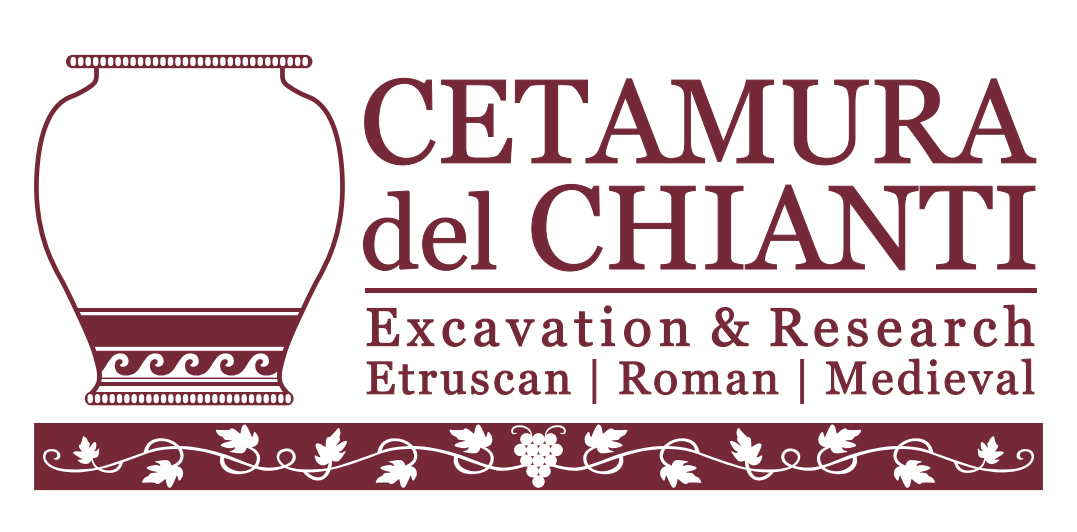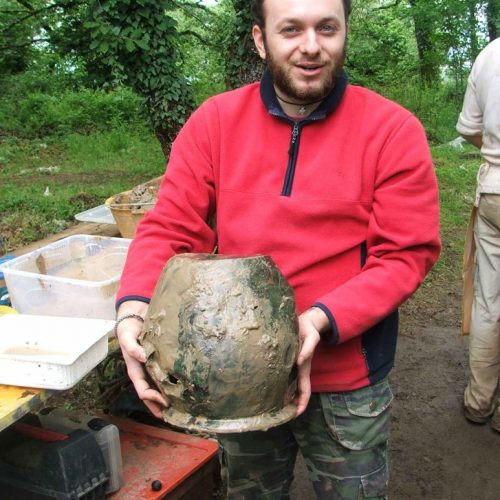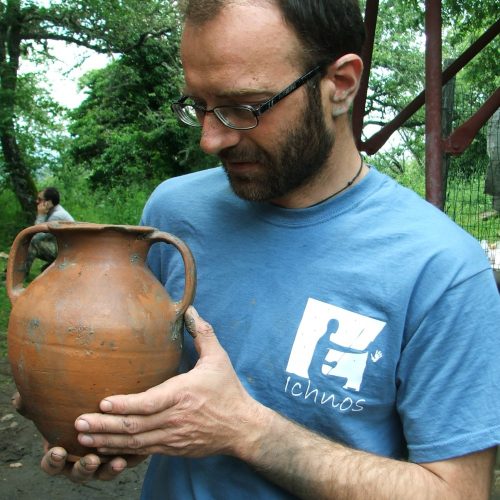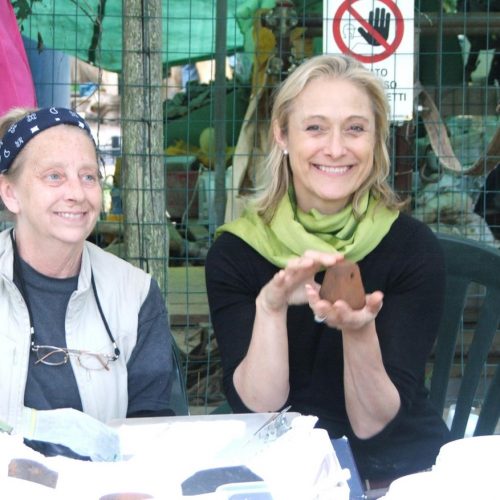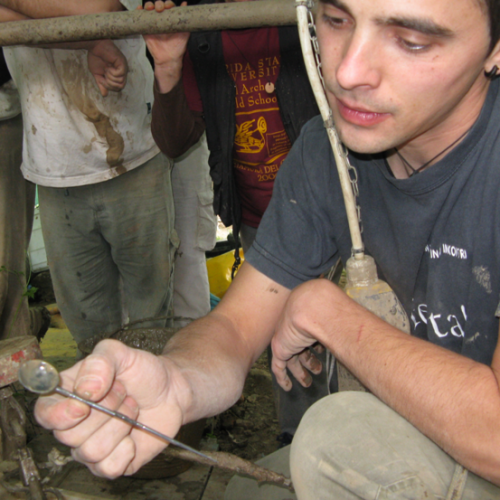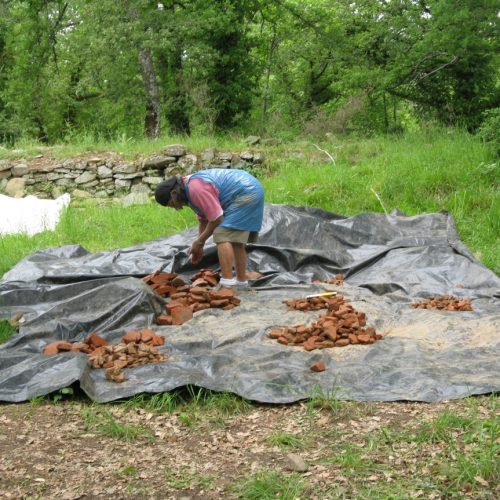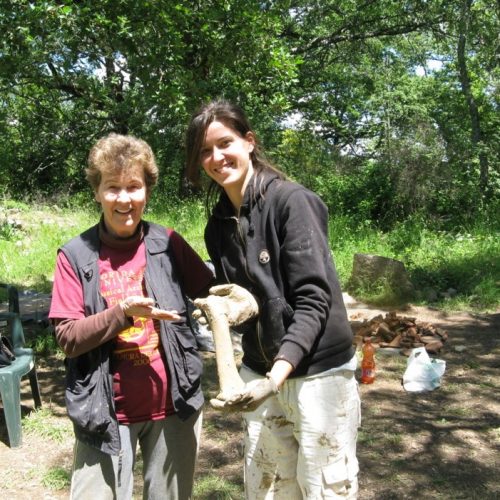2011-2016
The Wells of Cetamura
Early on in the history of exploration at Cetamura, Alvaro Tracchi and his colleagues had noted a deep cavity in the ground in the middle of Zone I. It would take 12 campaigns by Florida State University to get to the bottom of the depression, in reality a rock-cut well/cistern dug by Etruscans to 32.42 meters below ground level, exactly 100 Etruscan feet.
In the final, most difficult, years (beginning in 2011), the work was carried out by Ichnos: Archeologia, Ambiente e Sperimentazione of Montelupo Fiorentino, directed by Francesco Cini [a.]. The excavation was finally completed in 2014. At the same time a new well had been discovered on Zone II next to the sanctuary. Ichnos moved their operations from Zone I and excavated Well no. 2 to completion in 2016, at a depth of more than 8 meters. The following year the cornucopia of evidence from the two wells was drawn upon for the ambitious exhibition in Florence called “Wells of Wonders.”
The two wells together cover a time span from the late 4th century BCE to the 4th century CE, and provide a staggering amount of information about Etruscan and Roman Cetamura. Thousands of artifacts were discovered—bronze vessels [b.], pottery [c.], coins, glass, rings and ringstones, figurines, polished stone loom weights [d.], tokens, and numerous artifacts made of silver [e.], iron, lead, bone and stone. Huge quantities of brick and tile were extracted from Well # 1 [f.]. Equally abundant and significant were the organic remains carefully extracted—pollen from every level, wood (including artifacts cut from wood), nuts, seeds, and animal bones [g.] (pig, cow, sheep/goat, hare, cat and a multitude of birds of different kinds). Much has been published and much is still under study. Conservation and restoration were urgently important [h.].
